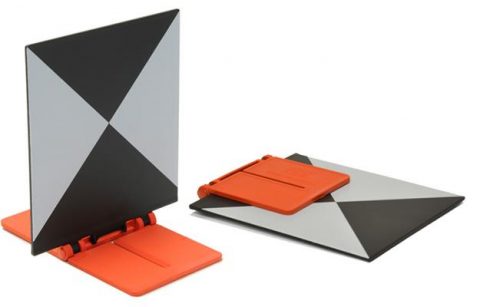
THE IMPORTANCE OF TARGETS IN A LASER SCANNER SURVEY
February, 5, 2020
Topic: Laser Scanner
(4 min read)
To perform a laser scanner survey in the best way, the first thing to do is to identify an action strategy by planning every moment of the survey step by step in order to avoid improvisation, waste of time and errors.
Even the “logistics” part has a key role for the success of a good laser scanner survey, and with the term logistics we are referring in particular to all those activities that follow the survey planning and that support it, how to mount the instrument correctly, or position targets intelligently.
What are the targets?
Commonly called targets or markers, they are accessories to support a land surveyor of fundamental importance for the success of a laser scanner survey and above all for the recording of acquired data.
There are basically two types:
- NATURAL: they are so called because they are recognizable within the scan by means of morphological peculiarities of the scanned object, such as edges, windows, recognizable and particular elements.
- ARTIFICIAL: positioned within the area to be scanned, the artificial targets are generally composed of materials that are particularly visible and reflective at the laser scanner wavelength. The goal is to create points easily recognizable by the tool to facilitate the acquisition and recording of data.
Artificial targets can of various types depending on the shape, size and material:

Planar Target
It is the most common target, used in most cases during surveys. Usually it rests on the ground or is attached to a surface. If necessary, it can be mounted on a special structure that facilitates its identification.
It is typically square or rectangular even if there are round shaped ones depending on the needs and convenience of the land surveyors.

Spherical target
The spherical shape allows maximum scanning efficiency from different directions and has proven to be the most effective target for laser scanning.
It is used in specific or occasional cases. It is coated with a special white paint which guarantees resistance and excellent reflective properties.
This target requires support that supports it to be used, even if the most modern ones are equipped with a magnetic base.
Main Issues
The main problems related to the targets are primarily identifiable in their positioning during a survey. Undoubtedly knowing how to place them in the right places is the most important thing.
A poorly positioned target risks not being clearly visible and therefore potentially useless.
Even the material of which the target is made represents a variable not to be overlooked. If the target is artificial, it must be clearly visible, not shiny or transparent, otherwise the scanner may have difficulty identifying it, risking to obtain incorrect and distorted results, for example the detected point may be closer or further away from its real location.
If you decide to print them, pay attention to the printer that is not an ink jet otherwise during the laser scanning the target will be completely white as the instrument will not be able to distinguish the black color.
It is also preferable to have different targets with different shapes but above all different sizes available. Depending on the type of survey, the size of the area and other factors that can be decisive, it will be necessary to use the right target to make scanning as simple as possible.
Conclusions
The success of a laser scanner survey and consequently of the recording of the data you collect depends on many factors. Using the right targets and knowing how to position them in the correct way, allow you to facilitate the data acquisition activity making the final result precise and accurate. Everything can be concretized in the best way without any unexpected or problematic only if an effective action strategy has been created upstream.
